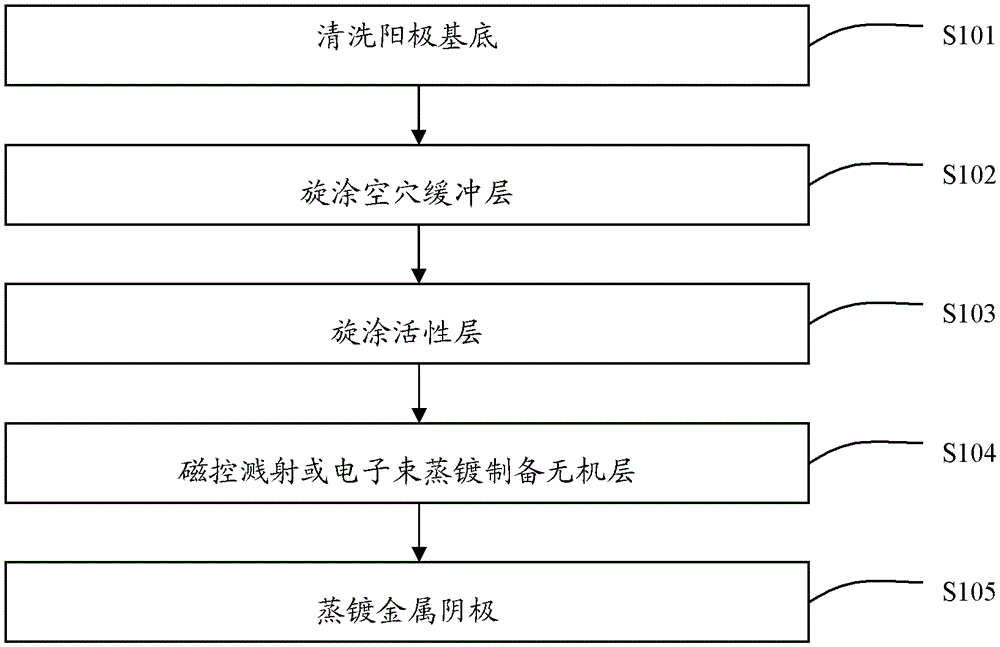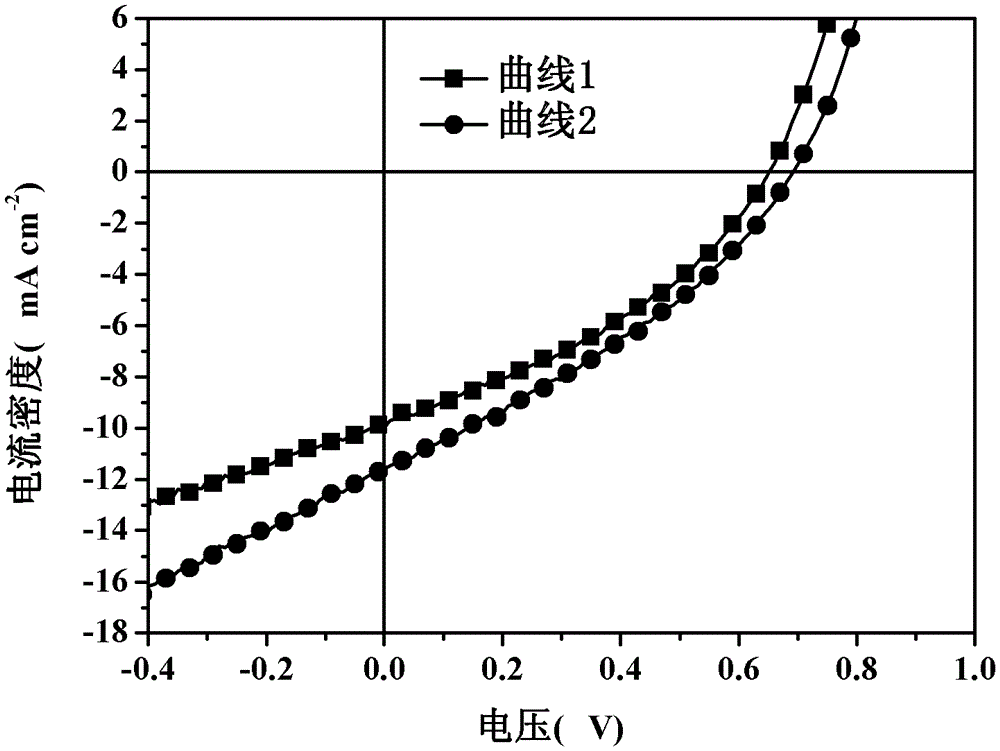Polymer solar cell and preparation method thereof
A solar cell and polymer technology, applied in circuits, electrical components, photovoltaic power generation, etc., can solve the problems of carrier recombination disappearance, affecting the photoelectric conversion efficiency of polymer cells, and long transmission distance.
- Summary
- Abstract
- Description
- Claims
- Application Information
AI Technical Summary
Problems solved by technology
Method used
Image
Examples
preparation example Construction
[0035] see figure 2 , the preparation method of the polymer solar cell of one embodiment, comprises the following steps:
[0036] Step S101 , cleaning the anode substrate.
[0037]The anode substrate is preferably indium tin oxide glass (ITO), fluorine doped tin oxide glass (FTO), aluminum doped zinc oxide glass (AZO) or indium doped zinc oxide glass (IZO). Preferably, the anode substrate is first subjected to photolithography treatment, cut into the required size, and then successively use detergent, deionized water, acetone, ethanol, and isopropanol to sonicate for 15 minutes to remove organic pollutants on the glass surface; clean After cleaning, carry out suitable treatment on the conductive substrate, for example: oxygen plasma treatment or UV-ozone treatment. The oxygen plasma treatment time is 5-15 minutes, and the power is 10-50 W; the UV-ozone treatment time is 5-20 minutes.
[0038] Step S102, spin-coating the hole buffer layer.
[0039] Preferably, the PEDOT:PS...
Embodiment 1
[0050] Example 1: First, carry out photolithography treatment on ITO, cut it into the required size, and then use detergent, deionized water, acetone, ethanol, and isopropanol to sonicate for 15 minutes each to remove organic pollutants on the glass surface; clean it up Carry out oxygen plasma treatment to conductive substrate at last, treatment time is 5min, and power is 35W; Chlorobenzene solution, the treatment method is preferably annealing at 200°C for 20 minutes, and the thickness is 120nm.
[0051] Then the electron beam evaporates the inorganic layer, the material is ZnO, and the thickness is 50nm, and then the cathode is evaporated, and the material is Al, and the thickness is 150nm.
[0052] Please refer to Table 1. Table 1 shows the energy efficiency test data of the solar cell devices prepared in Example 1 and Comparative Example.
[0053] The photocurrent test data of table 1 embodiment 1 and comparative example
[0054]
Current density (mA cm -2 ...
Embodiment 2
[0058] Example 2: First, carry out photolithography treatment on ITO, cut it into the required size, and then use detergent, deionized water, acetone, ethanol, and isopropanol to sonicate for 15 minutes each to remove organic pollutants on the glass surface; clean it Carry out oxygen plasma treatment to conductive substrate afterward, processing time is 10min, and power is 20W; , prepared on conductive glass by spin coating, heated at 100° C. for 15 min after spin coating, and the thickness was controlled at 20 nm. Then spin coat the active layer, the active layer is MDMO-PPV:PCBM system, wherein the solvent of the solution is chloroform. The total concentration of each system was controlled at 8mg / ml, and the mass ratio was in the range of 1:1, then spin-coated in a glove box filled with inert gas, and finally annealed at 200°C for 10min, and the thickness was controlled at 300nm. ; Then the electron beam evaporates the inorganic layer, the material is ZnS, the thickness is ...
PUM
 Login to View More
Login to View More Abstract
Description
Claims
Application Information
 Login to View More
Login to View More - R&D
- Intellectual Property
- Life Sciences
- Materials
- Tech Scout
- Unparalleled Data Quality
- Higher Quality Content
- 60% Fewer Hallucinations
Browse by: Latest US Patents, China's latest patents, Technical Efficacy Thesaurus, Application Domain, Technology Topic, Popular Technical Reports.
© 2025 PatSnap. All rights reserved.Legal|Privacy policy|Modern Slavery Act Transparency Statement|Sitemap|About US| Contact US: help@patsnap.com



